The English-speaking world is very prone to include Finland when referring to Scandinavia, but that doesn’t seem to be the local preference. So as a Swede with a Finnish mother, I’d like to clear some things up right from the get-go:
Is Finland considered part of Scandinavia?
Finland is not formally considered part of the Scandinavian region (Sweden, Denmark, and Norway), but the four are all part of the Nordic region. Finland also has strong historic links with the region, and the broader Scandinavian definition used in the US and UK usually includes Finland.
To visualize this, here is how the locals define Scandinavia (and the Nordic region):
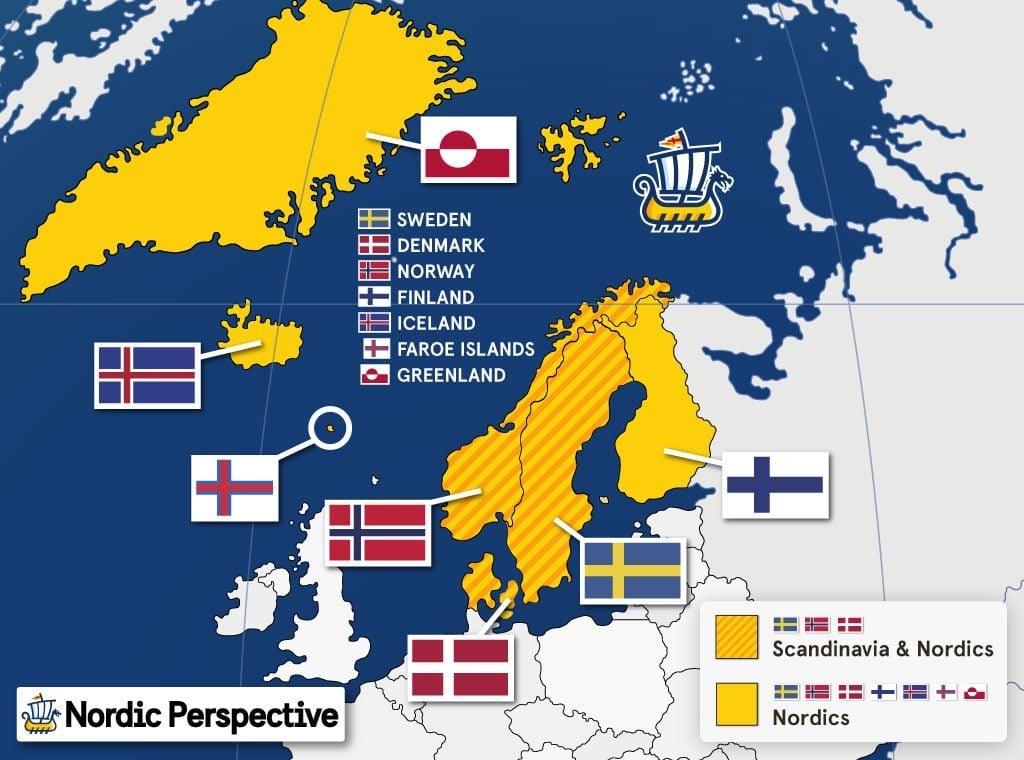
It should also be noted that a sizable part of northwestern Finland is technically part of the Scandinavian peninsula, stretching west and bordering both Norway and Sweden.
Finland has also been part of both Sweden and through it the Scandinavian union (a.k.a. the Kalmar Union), so the Scandinavian ties are inevitably strong in Finland.
Shop Authentic Nordic Products
Get some Scandi spirit in your life with our authentic Nordic apparel, prints, drinkware, and more sent right to your doorstep with free shipping on $50+ orders within the US.
 Vist the NP Shop
Vist the NP Shop
Although sometimes this comes with a bad connotation for the Finns, who may not necessarily want to be associated with the Scandinavians because of this.
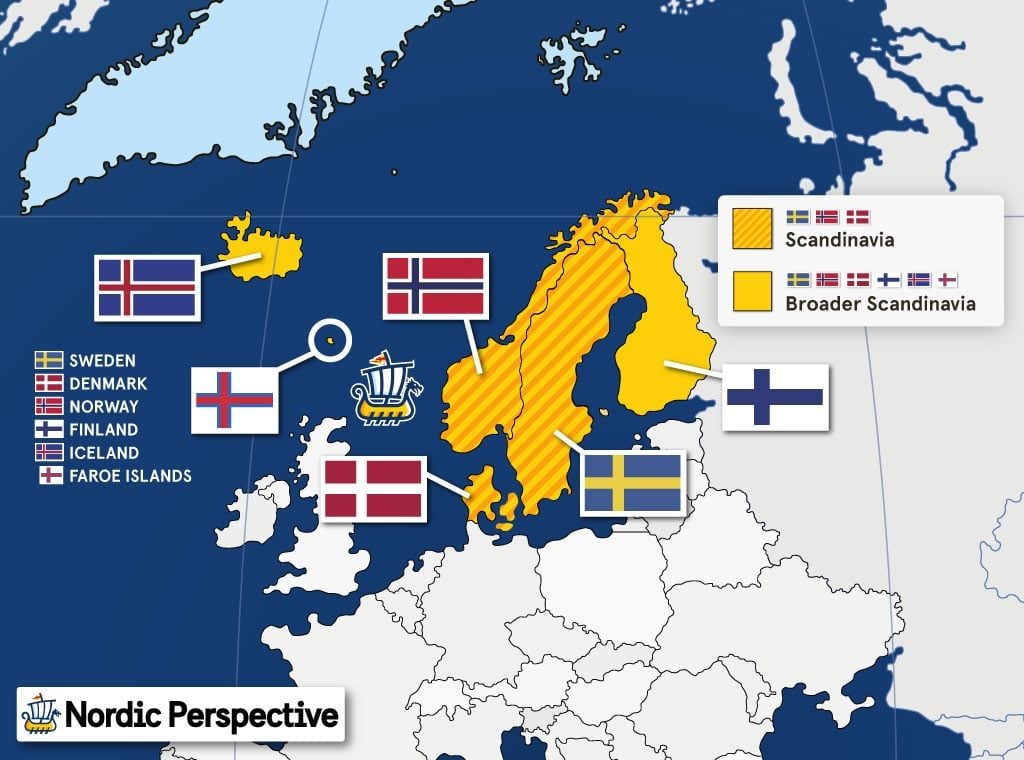
If Finns Aren’t Scandinavian, Then What Are They?
Finland and the Finns might not be Scandinavian, but they are definitely Nordic; bound politically, culturally, and financially to Sweden, Denmark, Norway and Iceland. The Finnish people are further of the Baltic Finnic ethnic group, which actually makes Estonians the Finns’ closest relatives.
There is however a sub-group of some 450 000 Sweden Finns whose heritage and ethnicity would be considered Scandinavian, and if we want to get technical there are some parts of northern Finland that are located inside of what is considered the Scandinavian peninsula.
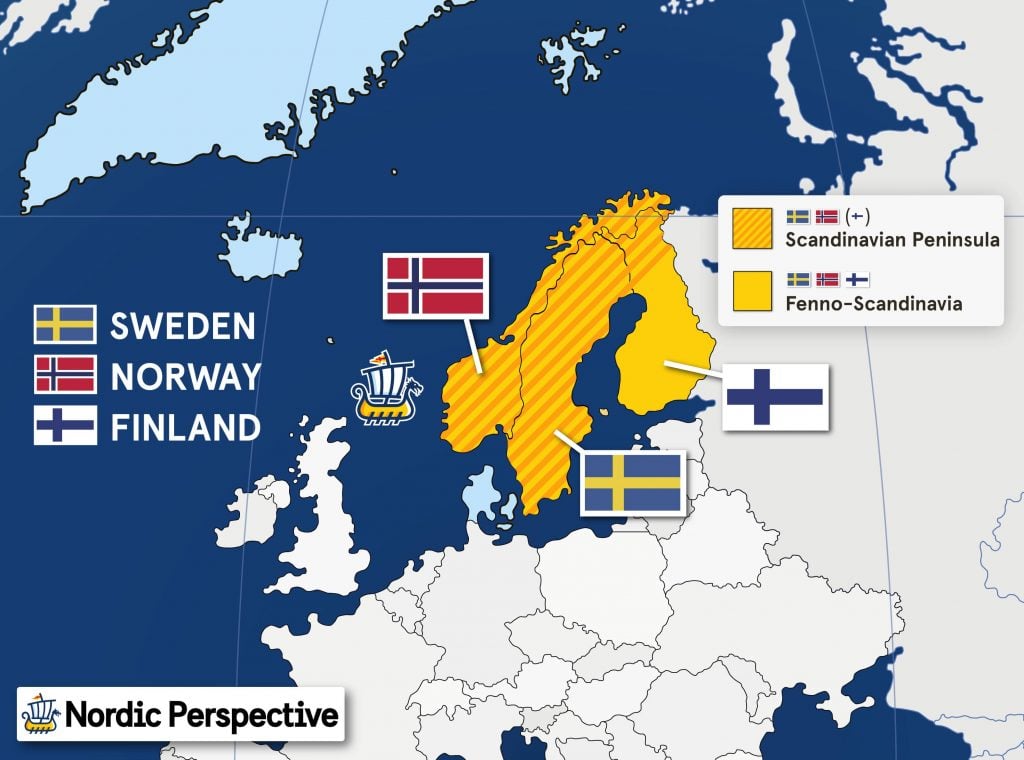
Is Finland Similar to Scandinavia?
The Finns might not share their Scandinavian origins, but Finland and the Scandinavian countries are today very similar politically and culturally.
The country has very strong political, financial, and cultural ties to the larger Nordic region, and to Sweden (Scandinavia’s largest country) especially.
Some parts of the Finnish coast have also been found to have shared the same culture group as the Scandinavian countries during the bronze age. This Nordic Bronze Age Culture were the forefathers of the Norse (Vikings), so there are some Scandinavian links in Finland historically speaking.
Formally speaking, Finland has signed a unique defense cooperation treaty with the rest of the Nordic countries (Sweden, Norway, Denmark, and Iceland) called NORDEFCO, meant to improve cooperation between the Nordic countries against, for example, a looming Russian threat.
There is also a special trilateral defence agreement signed between Finland, Sweden and Norway in September 2020, meant to improve the military response capabilities even more between the most Northern Nordic countries.
Finnish culture might have been influenced by the Scandinavians over the years and be very closely knit today, but the Finnish language is not even close to the Scandinavian languages. It is part of the Uralic language group (more examples include Estonian and Hungarian), as opposed to the Indo-European language group the Scandinavians are part of.
If you’re interested in learning more about where the Finns came from and how, I have written an article where I go in-depth on Finnish heritage and the origin of the Finns.
Despite strong Nordic ties, Finland also has very close ties to the Baltics in general and Estonia in particular, both historically and linguistically speaking.
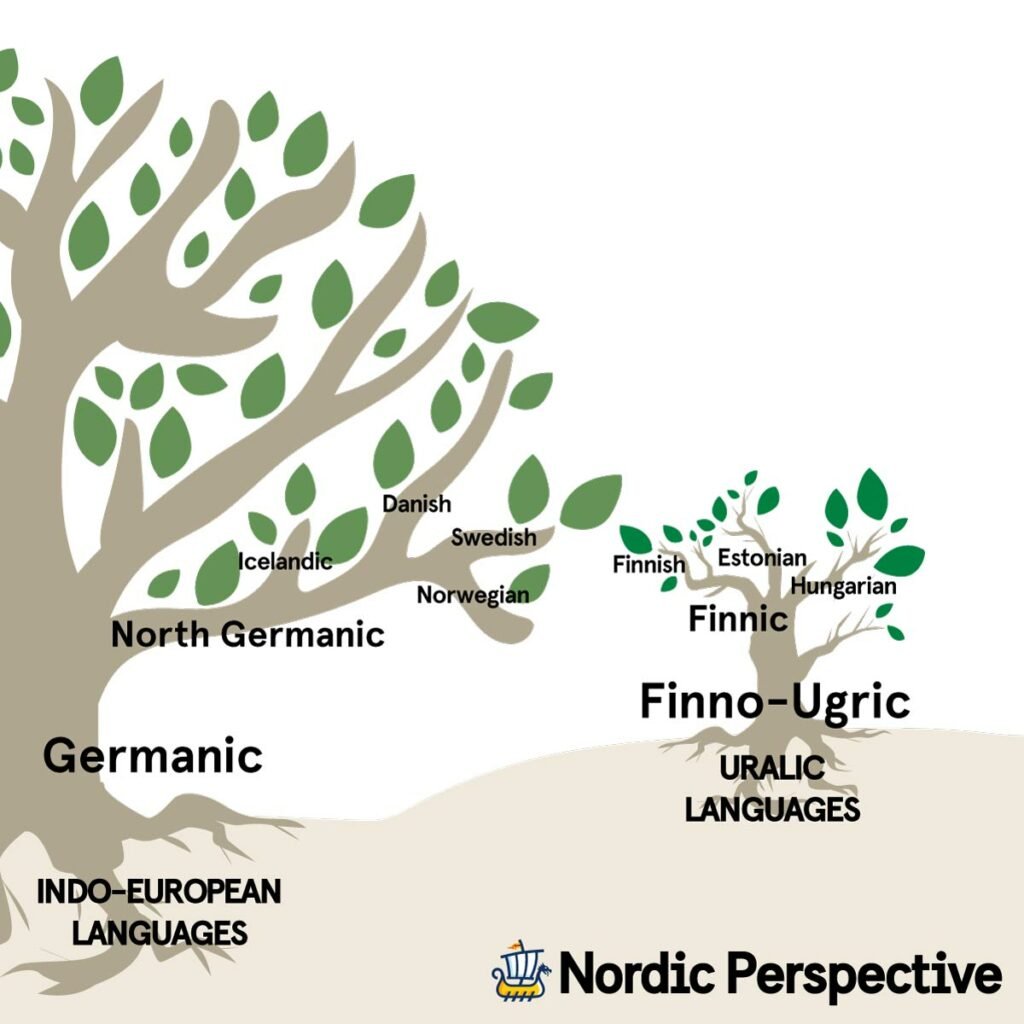
The two countries share a lot of common history, and Finnish and Estonian are part of the same language group (the Finnic or Balto-Finnic languages), which is very distant from the rest of the Nordic languages (as they are Indo-European languages in the Germanic language family they are not even remotely related to the Finnic languages in the Uralic language family).
Does Finland Have a Scandinavian Cross Flag?
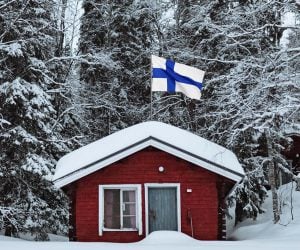
The Finnish flag is called Siniristilippu, “the Blue Cross Flag”, and features a blue so-called Nordic cross on top of a white background.
The white background is supposed to symbolize the white winter snow, and the blue is linked to the nickname “Land of the Thousand Lakes” (symbolizing the blue lakes).
By the way, if you'd like to connect to your inner Scandinavian with some stylish prints and clothing, I've created a collection of high-quality and authentic Nordic posters and apparel.
Shop Authentic Nordic Posters & Apparel
Get in to the Scandinavian spirit at home with our premium museum-quality prints and original apparel sent right to your doorstep with free shipping worldwide.
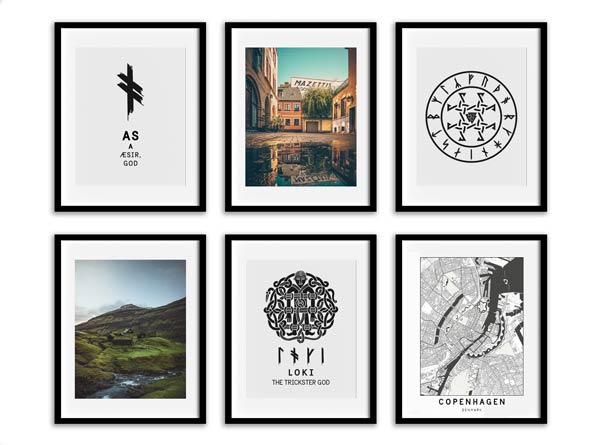 Get Them Now
Get Them Now
Sources:
https://www.norden.org/en/information/facts-about-nordic-countries
https://www.nature.com/articles/s41467-018-07483-5
https://www.nordefco.org/the-basics-about-nordefco
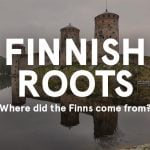 Finnish Heritage: Nordic, Viking, and Baltic Ties Explained
Finnish Heritage: Nordic, Viking, and Baltic Ties Explained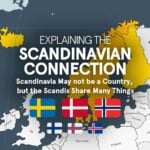 Is Scandinavia a Country? The Scandinavian Connection Explained
Is Scandinavia a Country? The Scandinavian Connection Explained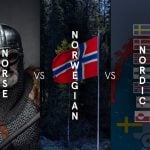 Norse vs. Norwegian vs. Nordic: Differences Explained
Norse vs. Norwegian vs. Nordic: Differences Explained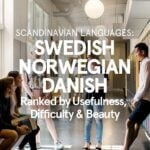 Nordic and Scandinavian Languages Explained and Ranked
Nordic and Scandinavian Languages Explained and Ranked

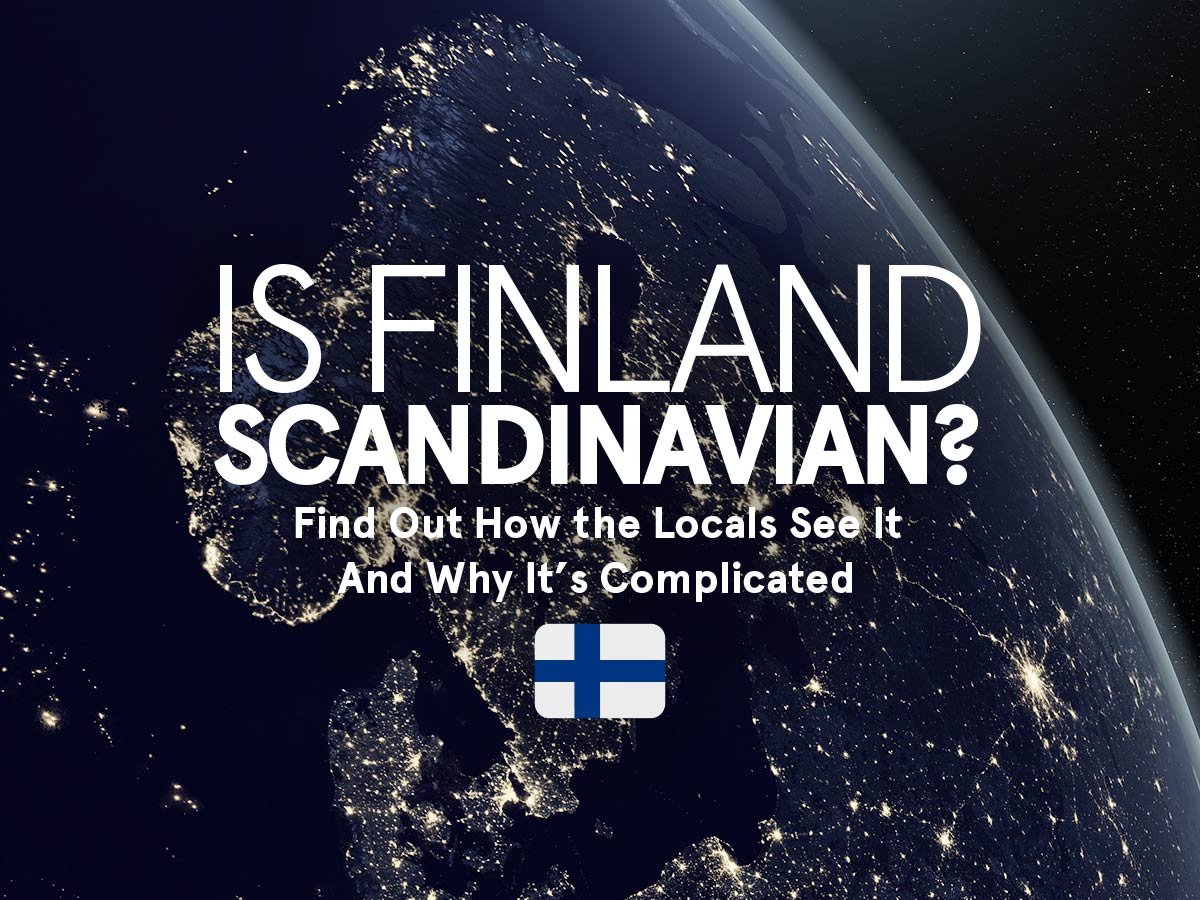
Tahnks fo the good article. Here are few poits more.
In this Scandinavian case, it is almost always forgotten that the whole of northern Scandinavia is inhabited by the Sámi. The cultural area of the Sámi does not follow the borders of the kingdoms and also extends to the Russian side. These northernmost nations have influenced the region for centuries and are a significant part of Scandinavia’s history and cultural wealth. It is also usually forgotten that Finns have lived in Sweden and Norway for hundreds of years. It can be read from written sources that one great migration took place in the 16th century, when Finns moved to central Sweden and Norway and established vibrant communities there whose descendants are part of the present Swedish and Norwegian people. They were called forest Finns. Prince Daniel is probably the most famous descendant of the forest Finns. Then we also have the Kvens, who are the population of Finnish origin in northern Norway, or Ruija (Finnmark). The Kvens are the descendants of Finns who migrated to the Arctic coast mainly from the Tornio River Valley, Peräpohjola and Lapland in the 18th and 19th centuries. On the other hand, it is also known that when kings were elected to Sweden by the stones of Måra, Finns have been invited to the election since the 14th century. Sometimes only to follow the delivery, but sometimes to take part in it, depending on the current situation and the power relations of the kingdom. After Sweden had shamefully lost its eastern part (Finland) to Russia, the Scandinavian movement began to emerge in Sweden, longing for the times of the Klamari Union. At the same time, the national idea and desire to separate from both Sweden and Russia arose in Finland, and Finland began to develop its own national identity and history. Finland thus separated from its Scandinavian family, driven by both its own interests and the reborn Scandinavian ideology in Sweden. In reality, Finland has always been part of Scandinavia, or the North, or whatever the area is called.
Very nice article, however I wouldn’t say Finland has particularly close ties to the Baltics (Latvia and Lithuania feel way more alien and different than almost any Western European country), just Estonia and even then it’s mostly about linguistics. There is also a 300,000 minority of Swedish-speakers in Finland (Swedish is in fact co-official in Finland with Finnish).
As a Finn with a Swedish mother, who visits Sweden every year, the two countries feel almost the same (the cities, nature, society, culture, people etc). Biggest difference of course is the language, which I guess is why the distinction between Scandinavia and Finland still exists.
Hello Robin!
Thanks for reading! I fully agree that Sweden and Finland feel almost the same except for the language, which does differ quite a bit though as you mentioned.
I have relatives on both the Swedish and Finnish countrysides (i.e. farmers), and I’d say that there are bigger cultural differences between the two there from what you’ll see in bigger cities. My Karelian relatives are also very different from my Scanian relatives culturally speaking, so I guess it depends on which region we’re talking about as well!
Ha det fint!
Hopefully you did not omit Denmark as part of the NORDEFCO treaty on purpose? It does stand for Nordic Defense Cooperation, and includes all the major nordic countries, including Denmark.
Sincerely “only a slightly begrudged dane” 🙂
Whoops! Definitely not on purpose but an honest mistake. 🙂
I was actually referring to the trilateral agreement signed between Sweden, Norway, and Finland in 2020, which was signed on top of the existing NORDEFCO agreement. (see https://www.regeringen.se/debattartiklar/2020/09/finland-norge-och-sverige-fordjupar-sitt-trilaterala-operativa-forsvarssamarbete/)
I’ve corrected the description to include all Nordic countries in NORDEFCO and described the trilateral agreement separately.
Wouldn’t the Finn’s closest ethnic relatives be the Karelians across the eastern border, rather than the Estonians?
It would seem the long period of Swedish control of Finland proper had more lasting cultural influence than the later century as a Russian Duchy (unlike for the Karelians who write in Cyrillic and were Russian Orthodox).
Hi Eric!
Karelians and the Karelian language have an interesting history, and are considered Finnic and indeed very closely related to the Finns and Finnish language (which are also Finnic). The reason I didn’t mention the language is that it isn’t considered an official language of any independent nation as Finnish and Estonian is.
Interestingly, my mother’s family are Karelians and had to flee Karelia when the Russians annexed their lands during WW2, and were relocated west to various places outside Helsinki (specifically Lahti in my mother’s case). As far as I know, they always considered themselves Finns first and Karelians second, though from what I can tell that wasn’t always the case when the Karelians were mostly Orthodox before the 17th century.
All the best,
–Karl